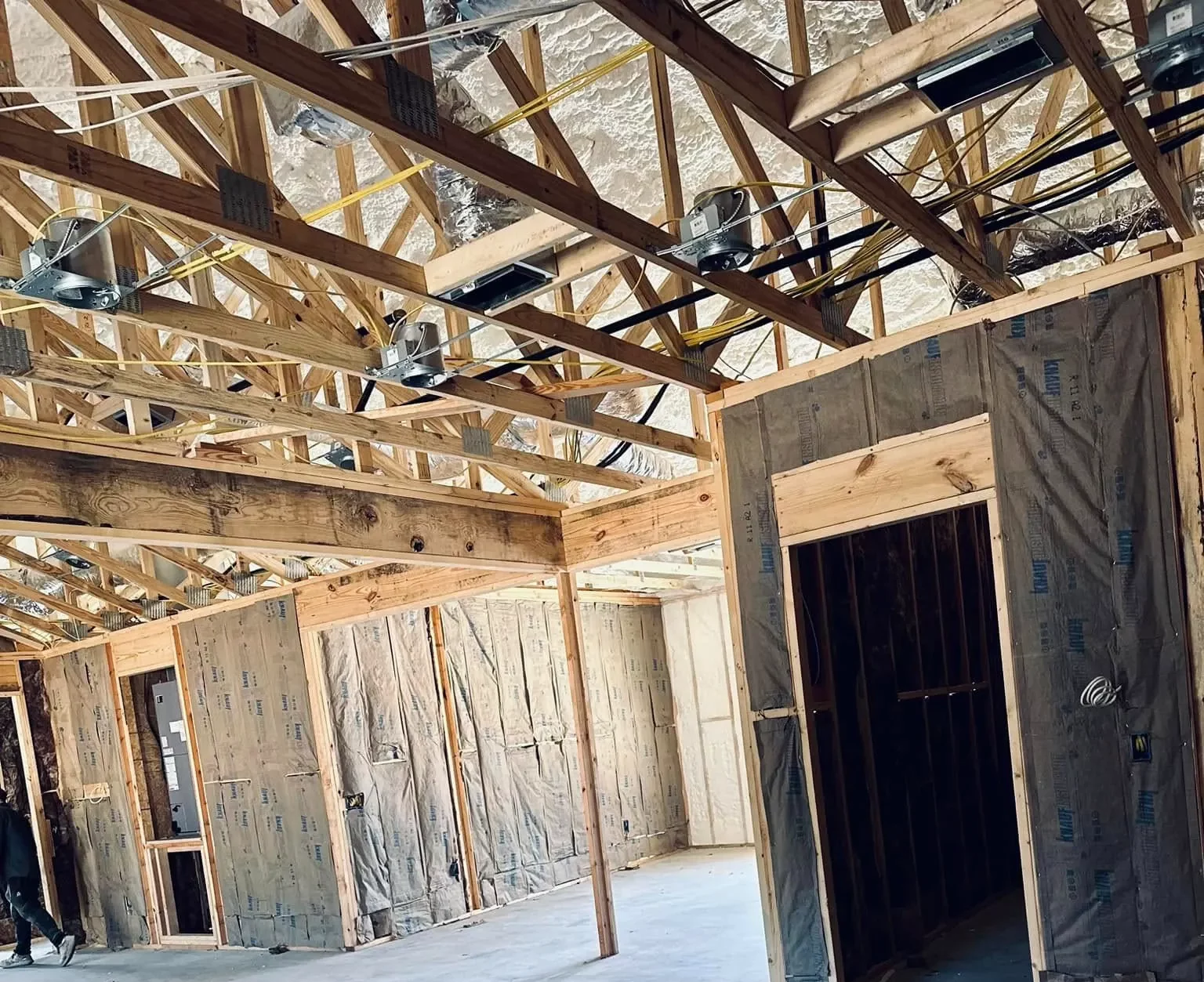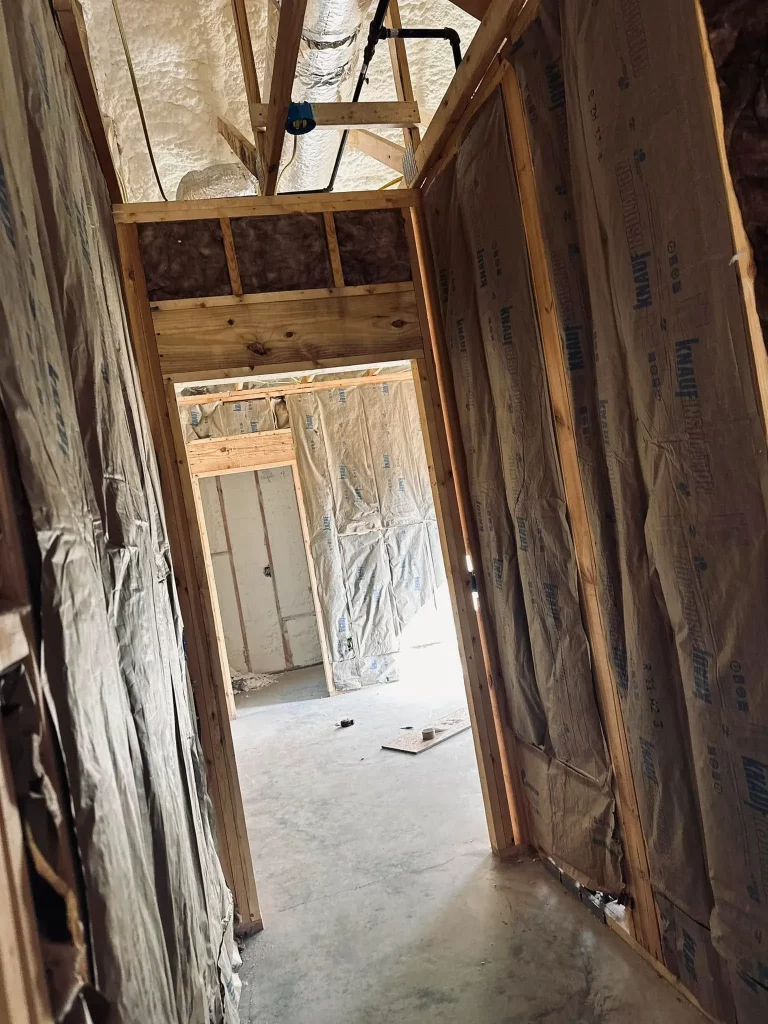
Little Rock homes require fiberglass insulation primarily due to the region’s humid subtropical climate, which creates year-round temperature fluctuations ranging from winter lows of 28°F to summer highs exceeding 92°F. This climate pattern demands effective thermal barriers to maintain indoor comfort while managing moisture control and energy efficiency. Fiberglass insulation addresses these specific challenges by providing consistent R-values, moisture resistance, and cost-effective temperature regulation suitable for Arkansas’s climate conditions.
The Arkansas climate creates unique insulation demands that fiberglass material handles exceptionally well compared to alternatives. Based on extensive installation experience across central Arkansas, fiberglass insulation delivers reliable performance in the region’s high-humidity environment while meeting local building codes and energy efficiency requirements. This analysis provides comprehensive guidance for homeowners evaluating insulation solutions specific to Little Rock’s environmental conditions.
Little Rock’s humid subtropical climate presents distinct challenges requiring strategic insulation approaches. Summer temperatures frequently exceed 90°F with humidity levels reaching 80%, while winter conditions drop to freezing temperatures with significant moisture presence. According to the National Weather Service, Little Rock experiences approximately 220 days annually with temperatures above 70°F, creating substantial cooling demands.
The region’s seasonal temperature swings create thermal bridging issues in homes lacking proper insulation. Heat transfer through walls, attics, and crawl spaces becomes pronounced during extreme weather periods, leading to increased energy consumption and comfort problems. Arkansas homes built before 1980 often contain inadequate insulation levels, making upgrades essential for modern efficiency standards.
| Insulation Property | Fiberglass Batts | Blown-in Fiberglass | Loose-fill Fiberglass |
|---|---|---|---|
| R-Value per inch | 3.1-3.4 | 2.2-2.7 | 2.2-2.9 |
| Moisture resistance | Good | Excellent | Good |
| Air sealing capability | Moderate | High | High |
| Installation complexity | Low | Moderate | Low |
| Longevity (years) | 20-30 | 25-40 | 20-35 |
Fiberglass insulation excels in Little Rock’s climate conditions through its dimensional stability and moisture management properties. The material maintains consistent thermal performance despite humidity fluctuations, unlike organic alternatives that can degrade or settle over time. Quality fiberglass products resist mold growth and pest infiltration, addressing common concerns in Arkansas homes.
Bonus Tip: Install fiberglass insulation during moderate weather conditions (60-80°F) for optimal installation quality and worker comfort. Spring and fall installation periods allow proper vapor barrier positioning before extreme seasonal demands.
Arkansas building codes mandate specific insulation R-values based on climate zone classifications. Little Rock falls within Climate Zone 3A, requiring minimum R-38 attic insulation and R-13 wall insulation for new construction. Existing home upgrades benefit from exceeding these minimums to achieve better performance and potential utility rebates.
Local building departments recognize fiberglass insulation as meeting fire safety requirements when properly installed with appropriate vapor barriers. The material’s non-combustible properties align with Arkansas fire codes while providing necessary thermal protection. Professional installation ensures compliance with local regulations and optimal performance characteristics.
| Climate Zone 3A Requirements | Minimum R-Value | Recommended R-Value |
|---|---|---|
| Attic insulation | R-38 | R-49 |
| Wall insulation | R-13 | R-15 |
| Floor insulation | R-25 | R-30 |
| Basement walls | R-10 | R-15 |
Proper fiberglass insulation installation reduces energy consumption by 15-30% in typical Little Rock homes, according to Arkansas Energy Office data. The material creates thermal barriers that minimize heat transfer during both heating and cooling seasons, resulting in lower utility bills and improved HVAC system efficiency. Well-insulated homes maintain consistent temperatures with reduced equipment runtime.
The Arkansas Public Service Commission reports that homes with adequate insulation experience 20-40% lower peak energy demand during extreme weather periods. This reduction benefits both homeowners through lower bills and the electrical grid through decreased strain during high-demand periods. Fiberglass insulation contributes significantly to these efficiency improvements when properly installed.
Bonus Tip: Combine fiberglass insulation with air sealing measures around electrical outlets, plumbing penetrations, and rim joists for maximum energy savings. This comprehensive approach can increase efficiency benefits by an additional 10-15%.
Evaluate your home’s current insulation levels and identify problem areas before selecting fiberglass solutions. Attic inspections reveal existing insulation conditions, air leakage points, and structural considerations affecting installation approaches. Professional assessment determines appropriate R-values and installation methods for your specific situation.
Consider ventilation requirements when planning fiberglass insulation installation. Arkansas homes need balanced ventilation to manage moisture while maintaining insulation effectiveness. Soffit and ridge vents work with properly installed fiberglass to create optimal air circulation patterns without compromising thermal performance.
Timing installation around weather conditions ensures optimal results and safety. Avoid extreme temperature periods when attic conditions become dangerous for installers. Schedule installation during moderate seasons when access is safer and materials can be properly positioned without weather-related complications.
Bonus Tip: Install temporary plywood walkways across ceiling joists during DIY projects to prevent accidental foot-through-ceiling incidents and provide stable working surfaces.

| Performance Factor | Fiberglass Rating | Expected Timeline |
|---|---|---|
| Thermal efficiency | Maintains 95%+ | 20+ years |
| Settlement resistance | Minimal (<2%) | Throughout lifespan |
| Moisture recovery | Complete drying | 24-48 hours |
| Pest resistance | Excellent | Permanent |
| Fire resistance | Class A rating | Permanent |
Fiberglass insulation maintains consistent performance throughout its lifespan when properly installed and protected from physical damage. The material resists settling and compression better than many alternatives, ensuring thermal values remain stable over decades. Regular inspection every 5-7 years identifies any issues requiring attention.
Arkansas’ humidity conditions can affect insulation performance if moisture infiltration occurs. Quality fiberglass products resist mold growth and dry completely when moisture sources are eliminated. Proper vapor barrier installation and ventilation prevent moisture-related problems while maintaining insulation effectiveness.
LMC Insulation, LLC provides comprehensive fiberglass insulation solutions designed for the Arkansas climate conditions and building requirements. The company offers specialized services addressing Little Rock homes’ unique needs:
Remove existing damaged insulation, seal air leaks around penetrations, ensure adequate ventilation, and verify electrical systems are properly protected. Clear attic access paths and protect belongings from construction dust.
Consider your home’s age, existing insulation levels, energy bills, and comfort issues. Arkansas homes typically benefit from R-49 attic insulation and R-15 wall insulation for optimal performance in the local climate.
Use proper respiratory protection, wear protective clothing covering skin completely, ensure adequate lighting in work areas, and maintain safe footing on ceiling joists. Professional installation eliminates these safety concerns.
Fiberglass insulation provides reliable thermal protection specifically suited to Little Rock’s humid subtropical climate challenges. The material offers excellent value through consistent performance, moisture resistance, and compliance with Arkansas building codes. Proper installation maximizes benefits while ensuring long-term effectiveness and comfort.
Evaluate your home’s specific needs, existing conditions, and performance goals when selecting insulation solutions. Consider a professional assessment to identify optimal approaches and ensure installation quality. Well-chosen fiberglass insulation delivers decades of improved comfort and energy efficiency for Arkansas homeowners.
A professional insulation evaluation ensures your Little Rock home receives the appropriate thermal protection for local climate conditions. Experienced contractor identify specific needs and recommend solutions, maximizing comfort and efficiency within your budget parameters.
LMC Insulation, LLC provides comprehensive insulation services throughout the Little Rock area with expertise in Arkansas climate requirements and building codes. Contact [email protected] or call (479) 351-6175 to schedule a detailed assessment and receive customized recommendations for your home’s insulation needs.
Fiberglass performs excellently in humid conditions like Little Rock’s climate. The material resists moisture absorption, dries quickly when exposed to water, and maintains thermal properties despite humidity fluctuations. Proper vapor barrier installation prevents moisture accumulation within insulation layers.
Quality fiberglass insulation typically maintains effectiveness for 20-30 years when properly installed and protected from damage. The material doesn’t settle significantly or lose R-value over time like some organic alternatives. Professional installation ensures maximum longevity through proper techniques and materials.
Adding fiberglass over existing insulation is often possible and cost-effective. Assess current insulation condition and compatibility before installation. Remove damaged or contaminated materials first, then install new fiberglass to achieve the desired R-values for current efficiency standards.
Fiberglass insulation requires minimal maintenance beyond periodic visual inspection for damage or displacement. Check for pest intrusion, moisture problems, or physical damage every few years. Address any issues promptly to maintain thermal performance and prevent larger problems.
Fiberglass offers cost-effective thermal protection with excellent moisture resistance suitable for Little Rock’s climate. Spray foam provides superior air sealing but costs significantly more initially. Fiberglass allows easier future modifications and repairs while delivering reliable long-term performance for most applications.